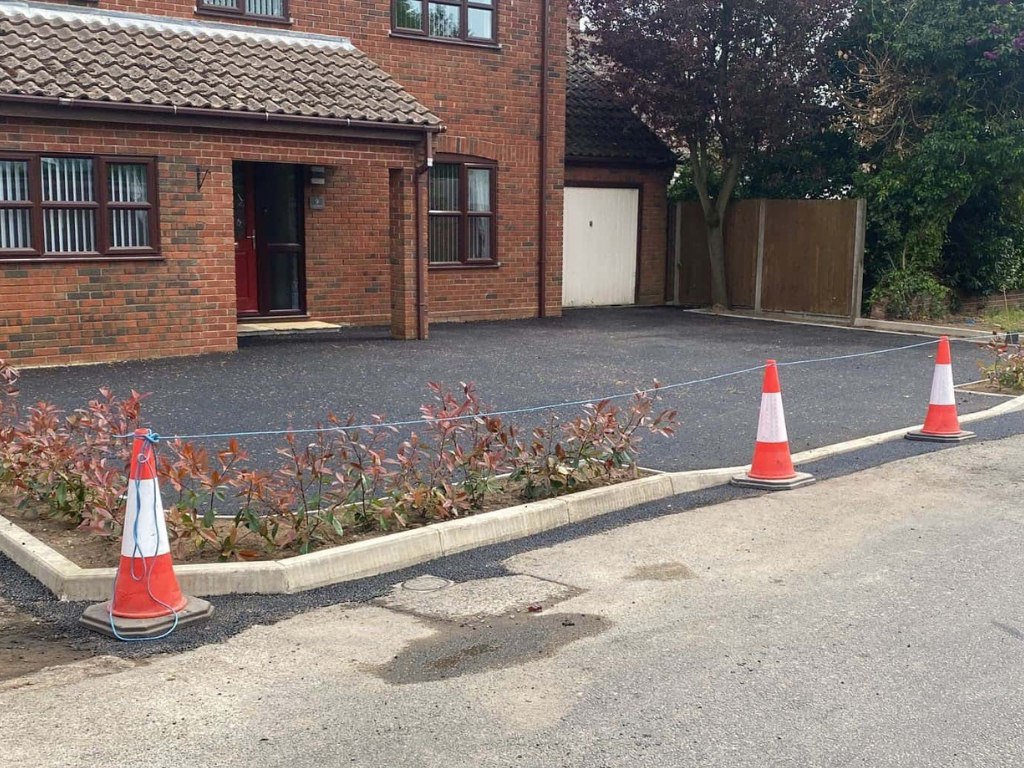How to Stop Weeds from Ruining Your Block Paved Path
Block paved paths are a popular and stylish choice for many homes in the UK, offering a neat, long-lasting surface that complements both modern and traditional properties. However, one common issue that plagues homeowners is the persistent growth of weeds between the blocks. At Flitwick Driveways & Patios in Flitwick, Bedfordshire, we frequently help clients reclaim their paving from invasive weeds and prevent future problems through expert solutions.
Why Weeds Appear in Block Paving
Weeds don’t usually grow from underneath the blocks. Instead, their seeds fall into the gaps between pavers and germinate in the sand joints. Regular rain, sun exposure, and airborne seeds make block paving an ideal environment for weed growth if not properly maintained.
Effective Ways to Prevent Weeds in Block Paving
1. Proper Installation from the Start
Weed prevention begins with how the paving is laid. A correctly prepared sub-base, proper edge restraints, and compacted jointing sand all contribute to a more stable surface that discourages weed growth. At Flitwick Driveways & Patios, we ensure all paving is installed with precision to reduce the chance of weeds taking hold.
2. Regular Brushing and Cleaning
Simple maintenance can go a long way:
- Sweep the paving regularly to remove leaves, soil, and other organic debris.
- Use a pressure washer occasionally to clean between joints, but be mindful not to dislodge the jointing sand entirely.
Removing debris promptly prevents seeds from settling and germinating in the joints.
3. Use of Kiln-Dried Sand
Over time, the sand between the blocks may wash out or become compacted. Re-sanding with kiln-dried sand keeps joints filled, leaving less room for weeds to establish. After cleaning or pressure washing, reapply the sand to maintain tight, weed-resistant joints.
4. Apply a Weed Suppressant or Sealant
Professional sealing of block paving offers dual benefits: it enhances the appearance of the surface and helps prevent weed growth. A quality sealant hardens the sand within the joints and forms a barrier that resists moisture and seed penetration.
5. Manual or Chemical Weed Removal
If weeds have already taken hold:
- Remove them manually with a hoe or weed puller to get the roots.
- For persistent or widespread growth, use a targeted herbicide—but do so carefully to avoid damaging the paving or nearby plants.
Always choose environmentally friendly products wherever possible and follow manufacturer instructions.
When to Call a Professional
If your block paved path is overrun with weeds, suffering from sunken areas, or poorly draining, it may be a sign of underlying issues with the installation. A professional inspection can identify whether re-sanding, sealing, or even partial relaying is needed. Our team at Flitwick Driveways & Patios in Flitwick, Bedfordshire is fully equipped to provide tailored maintenance or repair solutions to restore your paving to its best condition.
Conclusion
Weeds don’t just make your block paving look unsightly—they can also damage the structural integrity of your path over time. With proper installation, routine care, and professional support when needed, you can keep your path clean, safe, and attractive all year round.
For expert block paving services and maintenance advice, contact Flitwick Driveways & Patios today. We’re here to help you protect your investment and enjoy a weed-free path for years to come.
Call us on: 01525 302 797
Click here to find out more about Flitwick Driveways & Patios
Click here to complete our contact form and see how we can help with your driveway needs.

